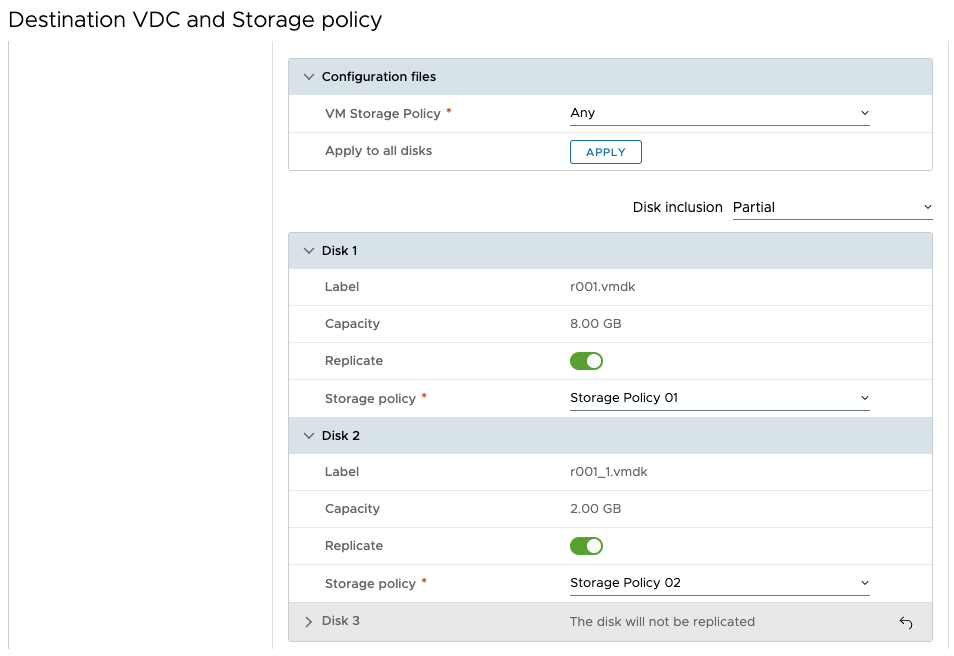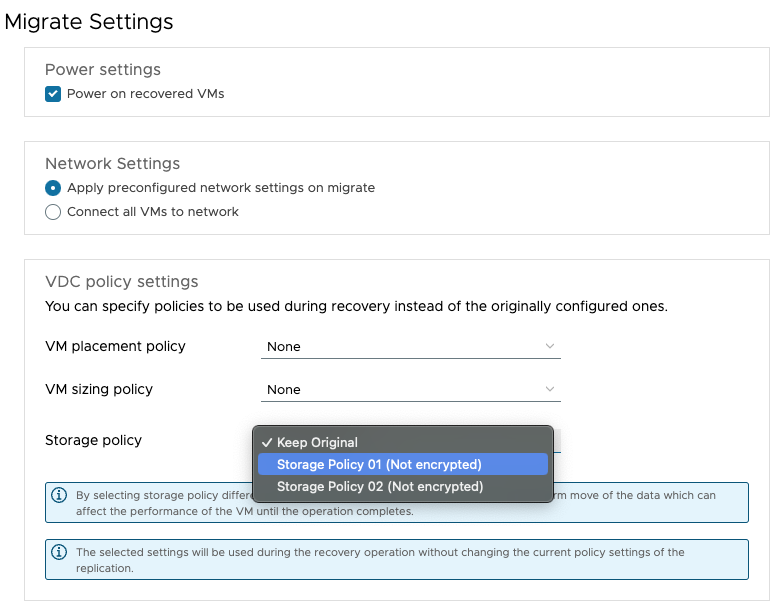We are excited to announce that VMware Cloud Director Availability 4.7 is now Generally Available!
The new version includes an important change in how the product handles the placement of a replicated workload at the destination cloud, several new additions that add flexibility to the replication storage settings, and more.
New Replication Placement Mechanism
Until now, VMware Cloud Director Availability used independent disks when replicating workloads to VMware Cloud Director clouds. However, this is not their original purpose which might have a negative impact on replications in certain cases.
To avoid that and to further improve stability, and operability and allow future enhancements, the Replication Tracking VM (RT VM) is introduced.
It enables a new way of replicating VMs compatible with VMware Cloud Director Availability 4.7 registered to VMware Cloud Director 10.5+.

The running replications will remain unaffected by this change after an upgrade of VMware Cloud Director Availability. There is an option to migrate them from independent disk to RT VM through the VMware Cloud Director Availability UI.
All new replications will utilize this new placement mechanism.
Storage Policy Selection
VMware Cloud Director Availability 4.7 brings two long-awaited features related to the Storage Policy selection:
- Storage Policy Selection Per Disk
- Storage Policy Reassignment During Workload Recovery
Storage Policy Selection Per Disk
With the previous versions of VMware Cloud Director Availability, selecting a Storage Policy for a replication applied the same settings for all of its disks.
In 4.7 you can now specify a Storage Policy for each disk while still utilizing the rest of the known functionalities such as excluding a disk or using a seed VM.
This feature is available for both VMware Cloud Director and VMware vSphere destination clouds with one difference – for vSphere clouds, you can select the Storage Policy and the Placement Datastore for each disk.

Note: When using a seed VM, the replication will use its storage settings and you will not be able to specify them.
Storage Policy Reassignment During Workload Recovery
Thinking of cost optimization, it is a common thing to use slower but cheaper storage for your data. This is relevant for replications as well where high volumes of data can be generated over time.
However, the storage speed might negatively affect the workload performance when it is failed-over during an event of disaster.
To save tenants the difficult choice of what to compromise with, VMware Cloud Director Availability 4.7 allows them to use particular storage settings when initially configuring a replication and then choose different ones when failing over the replication.

This new feature is in place for vSphere as well as for Cloud Director destination clouds.
Recovery Plans Pre-execution Validation
When using Recovery Plans, it is quite unpleasant to reach a certain stage of its execution and observe that some of the replication settings are not configured which leads to the plan’s inevitable failure.
The Recovery Plans Pre-execution Validation saves this inconvenience and the extra time spent by checking for the mandatory configurations required by VMware Cloud Director Availability to complete a replication or a set of replications – a whole plan.
These validations address significant changes to the cloud infrastructure by verifying the placement settings, check for missing recovery settings, or whether the source site is reachable for the migration cases.
This information is available in the new Health tab that every Recovery Plan has when selected. There you can see when was the last validation run as well as some available actions to fix a detected problem.
vSphere DR and Migration Seed VM Support
As a result of the effort for feature parity between vSphere and VMware Cloud Director destinations, it is now possible to select a seed VM when replicating workloads to vSphere clouds.
Improvements to VMware Cloud Director Clouds
Several new features address challenges for Cloud Providers and their tenants who replicate workloads to VMware Cloud Director Cloud destinations:
- NSX Security Tags Transfer – transfer of the security tags associated with a replicated VM when initiating a migration/failover between two clouds running at least VMware Cloud Director 10.3.
- Cloud-to-Cloud Sizing Policy Auto Select – when a VM has a sizing policy assigned at the source, and one with the same name exists at the destination, it will be automatically selected during the replication configuration.
- Remote Cloud Sites Visibility Management – Cloud Providers can control which peer sites will be visible to which Organizations. If a site that has active replications is hidden, they will continue showing up in the UI but it will be impossible to create new ones to/from the hidden site.
Granular Policy Controls over the Replication Directions – the available controls are extended by one more new option for maintaining the possible direction of the replication operations that a tenant can perform. With this one, Cloud Providers can restrict tenants from protecting the workloads running in the cloud to their on-premises data center.
Remember, to get the latest updates, check this blog regularly, you also can find us on Slack, Facebook, Twitter, LinkedIn as well as many demo videos and enablement YouTube, especially our Feature Fridays series!



